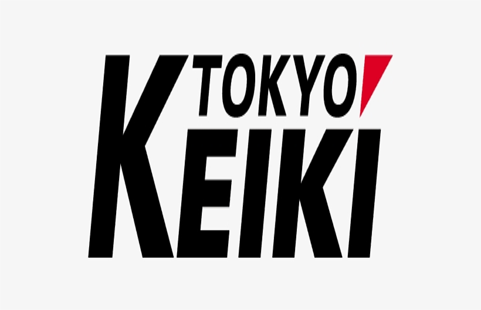Tokyo Keiki EC-8100/8600
Equipment Covered : Tokyo Keiki EC-8100/8600 , Tokyo Keiki EC-8100K/8600K , Tokyo Keiki EC-8000/8500 , Tokyo Keiki EC-8000K/8500K
Course Description
The Tokyo Keiki EC-8100/8600 type-specific training course provides officers with the system knowledge required to use this ECDIS for watchkeeping in accordance with the regulations of STCW and the ISM Code. The guided tutorial, with a duration of approx. 16 hours, covers the equipment familiarisation requirements of IMO Model Course 1.27 and MCA MIN-503(M) for the functions and controls of the ECDIS Tokyo Keiki EC-8100/8600. A course booking provides you with a three-week time frame to complete the course, repeating Modules where necessary, and to use the “FreePlay” Mode, which allows you to practice freely on the manufacturer’s original, type-approved, software. The courseware includes a final test of no more than 1-hour duration, which can also be repeated, leading to an individual certificate.
Course Modules
Module 1: User Interface
Module 2: ECDIS Basic Features
Module 3: Sensor Management/Monitoring
Module 4: Alert Management
Module 5: Chart Management
Module 6: Digital Passage Planning
Module 7: Voyage Planning
Module 8: Voyage Monitoring
Module 9: Bakcup Arrangements, Logs & Data
Module 10: Navigational Tools and Functions
Course Objectives
The objectives of this course are to cover type-specific familiarisation of ECDIS tailored to the specific needs of the Navigational Officers. Subject areas covered in the course include an overview of ECDIS carriage requirements, electronic charts, ECDIS navigational functions, ship handling with ECDIS, sensor integration, alert management, as well as the latest changes according to the new IHO and IEC standards. Combined the content of this course ensures that officers understand the type-specific navigational functions of ECDIS, and are familiar with the features that are common to all ECDIS systems before boarding a vessel, which ultimately translates to safer operations and vessel manoeuvring.
Suitable For
This course is designed for all officers of the bridge team involved in ensuring the safe navigation of the vessel.
Learning Outcomes
Module 1: The User Interface Module explains the fundamental design features of the ECDIS that may differ significantly between different ECDIS manufacturers.
Module 2:This Module explains the procedure of adjusting the display to your requirements. This process is essential to ensure that all relevant information and alerts are captured, and cluttering of visual and audible information is avoided.
Module 3: The Chart Work chapter teaches the trainee how traditional paper chart tasks are performed on the Electronic Chart Display and Information System.
Module 4: The Alert Management provides thorough knowledge of the management, handling, and interpretation of alarms, cautions and warnings. Proper handling of alerts is crucial to the safety of navigation.
Module 5: The ECDIS displays the vessel’s position, speed, and course in real-time on the chart, based on information received from navigational sensors. Understanding the sensors as well as the provided data and its limitation is taught in this Module.
Module 6: The Route Planning module will enable the user to plan routes, complying with the general requirements for voyage plans, as well as specific instructions given in the safety management systems of shipping companies and charterers.
Module 7: Route Monitoring familiarizes the user with the ECDIS specific route monitoring feature and how to monitor the voyage and all related data safely.
Module 8:The Chart Maintenance Module explains the process of chart ordering, chart installation and the updating of charts considering that charts and updates may be received via the internet or ship’s mail.
Module 9:The Backup Arrangement and Data Management requirements that need to be met when using the ECDIS as the primary means of navigation are described in detail throughout this Module.
Module 10:Besides the required features that an ECDIS can provide, there is a variety of additional functions and information that can be displayed on the ECDIS. This chapter explains features like radar information overlay, wave analysis, NAVTEXT messages, or tidal information is available on the ECDIS.
Prerequisites
ECDIS Generic knowledge, as per STCW and IMO Model
Course 1.27
Equipment Manufacturer
As a pioneering manufacturer of navigational products for the marine industry for over a century, TOKYO KEIKI provides total bridge equipment solutions and safe guidance to final destinations for vessels all around the world. TOKYO KEIKI was the first manufacturer in Japan to make Electronic Chart Systems over 20 years ago. Today, TOKYO KEIKI supports its customers from main locations like Tokyo, Singapore, Los Angeles, Shanghai and Busan with strong and reliable sales and service partners located in over 40 countries/areas. TOKYO KEIKI’s reliable and proven technology helps bolster safety on the high seas and enhances the ship operation for a more efficient voyage.
Equipment Covered
Tokyo Keiki EC-8100/8600
Tokyo Keiki EC-8100K/8600K
Tokyo Keiki EC-8000/8500
Tokyo Keiki EC-8000K/8500K



